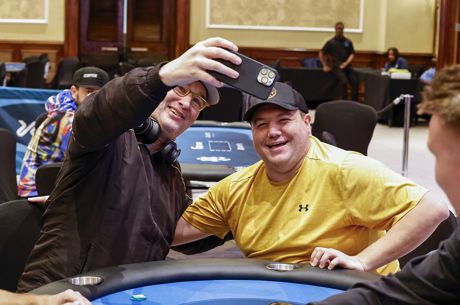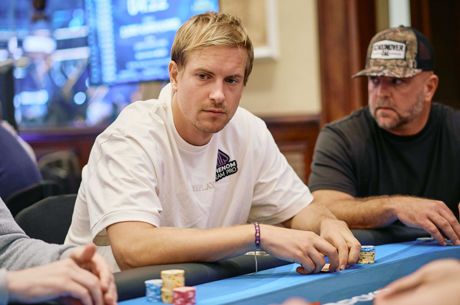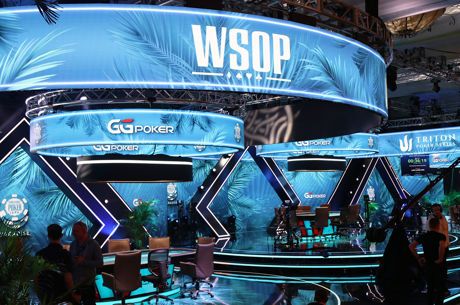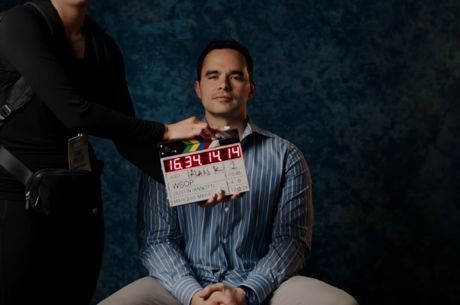WSOP Takes Aim at Stalling With New Clock Rules

The World Series of Poker has become the latest poker tournament to implement measures designed to speed up play, announcing a rule change for the 2017 Series that fundamentally alters the way a player can be put "on the clock."
Over the past couple of years, a number of poker tournament series have taken steps to speed up the pace of play and prevent stalling. The World Poker Tour implemented the Action Clock, a tablet-like timer set into the poker table in front of the dealer, in its WPT Tournament of Champions.
PokerStars has introduced "shot clocks" in nearly all of their tournaments at $10,000 and higher, starting at PokerStars Championship Bahamas. The ARIA High Roller series was among the first to utilize timers and time extension chips with the Super High Roller Bowl.
I do not find it enjoyable playing most no limit hold’em tournaments without a shot clock.
Poker superstar Daniel Negreanu, a leading voice in the industry and a participant in all of the above tournament series, has been among the most vocal players pushing for changes that reduce tanking in poker. He wrote in his blog that he believed it was only a matter of time before a clock was added to at least some WSOP events.
"I do not find it enjoyable playing most no limit hold’em tournaments without a shot clock," he wrote. "In any of the [no-limit hold'em] events I do happen to play, I will be taking advantage of my right to call for clocks on any habitual tankers."
The WSOP is taking a different approach than fixed timers, but looking to address the issue nonetheless. They've put forth a rule change for 2017 that will allow players to call the clock on other competitors much more quickly, and a tournament supervisor can put a clock on any player he or she feels is deliberately stalling, without prompting from a player at the table.
Previously, players were permitted to call a clock after a "reasonable amount of time." That was usually defined as two minutes. At that point, a tournament supervisor would ask the dealer if the player had a reasonable amount of time. If the dealer affirmed that to be the case, the player would be put on a one-minute clock, with his or her hand declared dead at the end of the final, verbalized 10-second countdown.

Professional poker player Greg Himmelbrand pointed out that this can be a slow, cumbersome process. He said the many steps described make it so that by the time a clock has been put on a player, it's already been too long.
Now, if a player feels another player is consistently taking too long to make decisions or deliberately stalling to ladder up the money or into the money, he or she can call a clock at any time. Additionally, the new clock is to be shortened to between 10 and 40 seconds, at the supervisor's discretion.
"I like the new rule," Himmelbrand said. "This is a big fix for that."
Tanking on the bubble has become almost a given at poker tournaments nowadays. Habitual slow play and excessive tanking has also raised concerns with players like Negreanu who feel the "fun factor" is reduced for amateur players, driving them away from the game.
However, the rule changes do certainly open up some potential issues. For example, what if a supervisor gives one player a 10-second clock but another player the full 40 seconds? The player on the shorter clock will undoubtedly raise an objection. Additionally, if players are stalling at multiple tables, it may be too difficult to put a clock on them simply due to a lack of human resources.
Poker rules and regulations guru Allen Kessler told PokerNews that stalling is a definite problem he has observed at the WSOP on bubbles and at pay jumps. Himmelbrand agreed, saying he noticed "blatant stalling" on the bubble of the WSOP Main Event.

"It needed to be changed," Kessler said of the old rule. "I like the idea of being able to initiate a clock quicker for chronic stallers."
Kessler does have a concern, however. He's worried that 40 seconds is too short a time. He said a one-minute clock with the option to reduce the time frame if a player has a clock called repeatedly would be a better option.
"In key spots, 30 seconds plus 10 isn't enough," he said.
The official wording from the WSOP does note twice that the use of the clock should be based on "the game situation," a key factor in Himmelbrand backing the change.
Consider two scenarios, he said. In the first, a player has a medium-to-large stack and is facing a standard preflop raise. In the second, a player has been check-raised all in on the river. In the former, he said 10 seconds or so is all someone should need. In the latter?
"By all means, take five minutes to put the hand together if need be," he said. "Situation A should get a zero second auto countdown; situation B could have the clock not even started for a while."
Himmelbrand said the only negative he sees is the potential for a vindictive tournament supervisor to abuse the ability to call a clock on a player without another player requesting one.
I expect that it's just going to be used in blatant stalling situations.
"But I expect that it's just going to be used in blatant stalling situations and that it'll help keep the game going," he said.
As long as that's the case, and if implementation of the new rule goes smoothly, the WSOP will just become the latest major tournament series to take steps to put the screws on habitual stallers and tankers.










